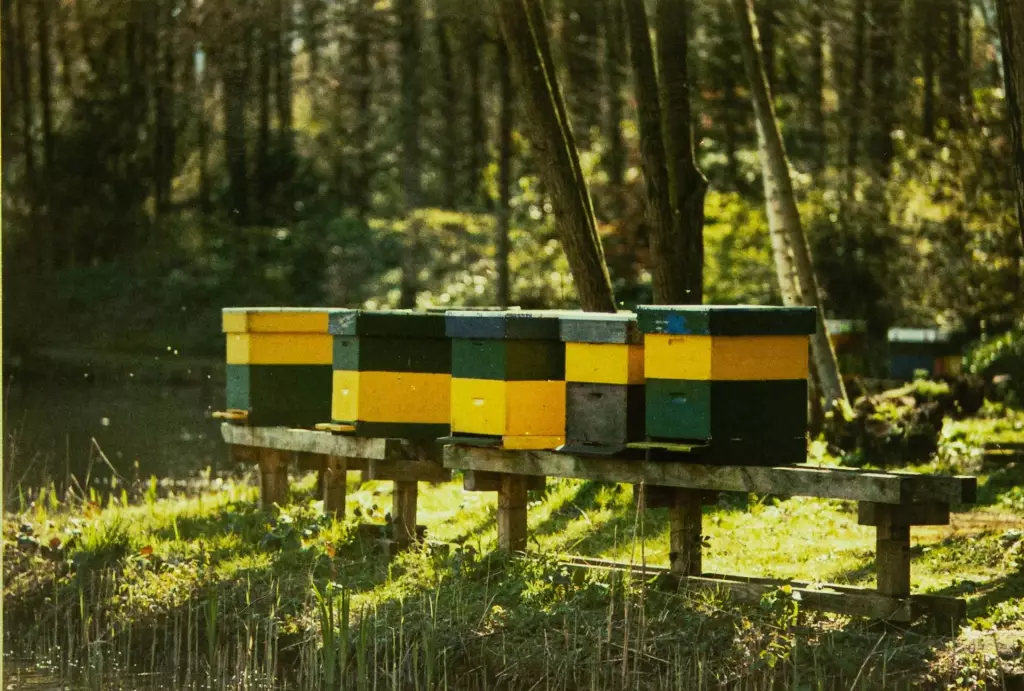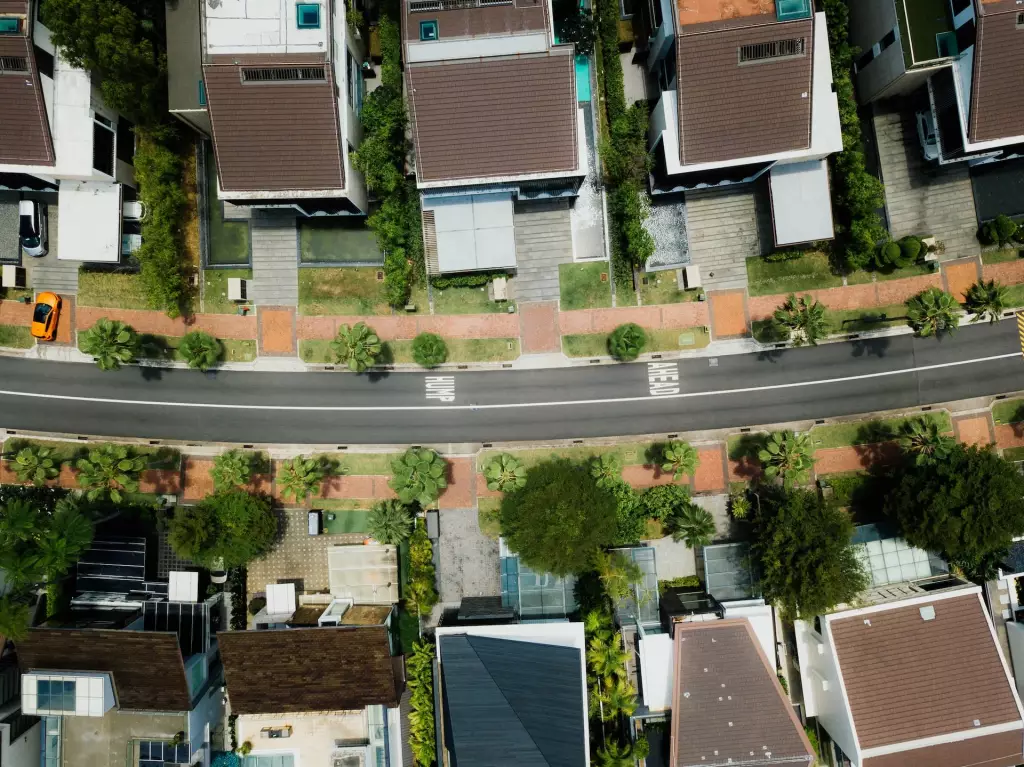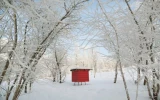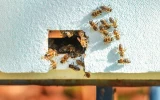What To Know When Moving a Beehive in Winter (Should You?)
Relocating a beehive during the winter requires a lot of thought and planning. To avoid losing bees and causing the colony extreme distress, you’ll need to know a few things.
Moving a beehive in winter, when bees are less active, can be done during the daytime. However, it’s important to keep the beehives closed and to be gentle throughout the entire relocating process. Ideally, beekeepers move their bees to a warmer environment to help the bees survive the cold weather.
You can move beehives in the winter, but you have to keep your bees safe during hive relocation in this harsh weather condition. Read on to learn more.
Summary
- Many beekeepers are known to transfer their beehives during the winter.
- To give the bees a better chance of survival, move them to a warmer location with direct sunlight.
- Be gentle when transferring the beehive; rough handling may cause the hive to split apart, killing several bees, including the queen.
- Avoid placing beehives in windy areas such as hills and valleys.

On this page:
Moving Beehives in Winter
1. Bees are less active
As the temperature drops below 50 °F (10 °C), honeybees will retreat to their hives and form a winter cluster to keep warm. They don’t fully hibernate like bears. Instead, they enter a semi-hibernation state, where their main goal is to conserve energy while consuming the honey reserves.
2. Keep the hives closed
It’s imperative the hive stays closed when the temperature is below freezing. Opening the hive could risk killing the colony and dispersing the heat cluster. To check the status of your colony, you can use a stethoscope to listen through the board for buzzing sounds.
Or if the bee box has a screened bottom board, you can check underneath and look through the screen and up at the colony.
3. Transferring to a new location can be a delicate operation
It is critical to handle the beehive gently, regardless of whether it is summer or winter. Being rough can cause the bee cluster to break apart, resulting in bee deaths, including your queen bee.
4. Hive relocation can be done during the daytime
During the winter, bees in colder regions cluster and don’t go foraging. This makes it easier for the beekeeper to move the hive, since hive relocation can be done during the daytime instead of at night.
5. Move them to a sunny location
Several beekeepers move their beehives to new locations during the winter. They place the beehives in a warmer environment, preferably somewhere with lots of sunlight and milder winters.
Best Location To Put Bees During Winter
1. Flat dry ground
Soggy grounds, uneven conditions, and a weak hive stand could result in a messy disaster.
That’s why putting the beehive on flat, dry ground is more to the advantage of the beekeeper than it is for the bees. Bees don’t mind where the hive is placed. They only care about access to available resources, the hive’s ventilation, and temperature control.
Beehives can weigh upwards of 100 pounds, so putting them on sturdy ground is a good idea. It’s also best to avoid growing vegetation under beehives. Damp vegetation under beehives will likely attract hive beetles, which are a major pest for southern US honey bees.

2. Face the hive southeast
If you live in the northern hemisphere, place the beehive southeast, so it receives lots of sunlight. As the entrance of the beehive faces the early morning sun, the captured heat signals the bees to start their day earlier.
This increases the worker bee's productivity and foraging time as the hive heats up from the morning sun. Facing the hive southeast also protects the hive from the cold northwest winds. The wind, which would otherwise force its way through the hive’s entrance, is deflected to go around it instead.
This can keep the beehive from overheating in the winter and will help conserve heat. Another benefit of facing the beehive southeast is that the bees won’t be fighting against the winds when they exit the hive.
In some cases, facing southeast may not be the best option. This heavily depends on the microclimate around your house or the location where you intend to place your beehive. To learn about the common practices in your area, contact your local bee associations.
3. Nearby food and water sources
Bees can fly up to 6 miles to forage for the nearest food source, but it can tire them out. They’re most likely to expend more energy than they're gaining from the food they find. Bee experts have learned that putting beehives near food and water sources allows the colony to conserve their strength and be more efficient at honey-making.
If you own a garden, it’s not necessary to put the beehive right next to it. Bees are natural foragers and will instinctively find your garden without being coaxed into it. Just make sure to avoid the bees, since they could sting you if they feel threatened by your constant human presence.
Bees also need water to drink. They can consume up to a whole gallon per beehive. It’s a good idea to keep a water source near your beehive’s location or place them near natural water sources such as rivers, streams, lakes, ponds, etc. By having a steady source of water nearby, the colonies can concentrate on foraging for pollen and nectar.
Places to Avoid Putting Beehives in Winter
1. Hills and valleys
It’s not ideal to put beehives in hills and valleys during winter because it exposes them to an upward wind draft, and the cool air often makes it difficult for bees to stay warm. Bees have a natural preference for nesting in tree hollows in high places. This helps them avoid predators, but also keeps away the cool air that might linger near the ground.
Another issue with hills and valleys is the challenge of transporting the bees' boxes to and from the apiary. A typical medium bee box weighs between 50 and 80 pounds when it’s full of honey. It could be burdensome for the beekeeper to carry that weight up and down a hill.
2. High foot traffic areas
Bees normally choose to live in secluded areas, away from humans and noisy places. They don’t like being disturbed by loud noises or being swatted away by random people. According to research, noise pollution has a negative impact on bee behavior. So beekeepers tend to work gently with their colonies and don’t like to disturb them with a lot of noise.
If a location near high-traffic areas is the only option, beekeepers should ensure to give the bees at least 20 feet of space. This will allow them to fly comfortably without being a danger to you and your home. Additionally, avoid placing them near sidewalks, parks, or your home garden if you do a lot of gardening. You might be pelted by bees and aggressively stung.

3. Windy areas
It’s bad for beehives to live in windy areas. The wind can blow rain into the hive, and destroy hive covers, and very strong winds can knock hives over to the ground. It can cause bees severe distress to have their hives knocked over.
More importantly, the spilled hive exposes the queen bee to the dangers of the natural elements. In the beekeeping world, if the queen dies, it could spell disaster for the entire colony.
Windy areas also make it difficult for bees to enter and exit their beehive. The force of the wind prevents them from flying or going outside to forage for food.


